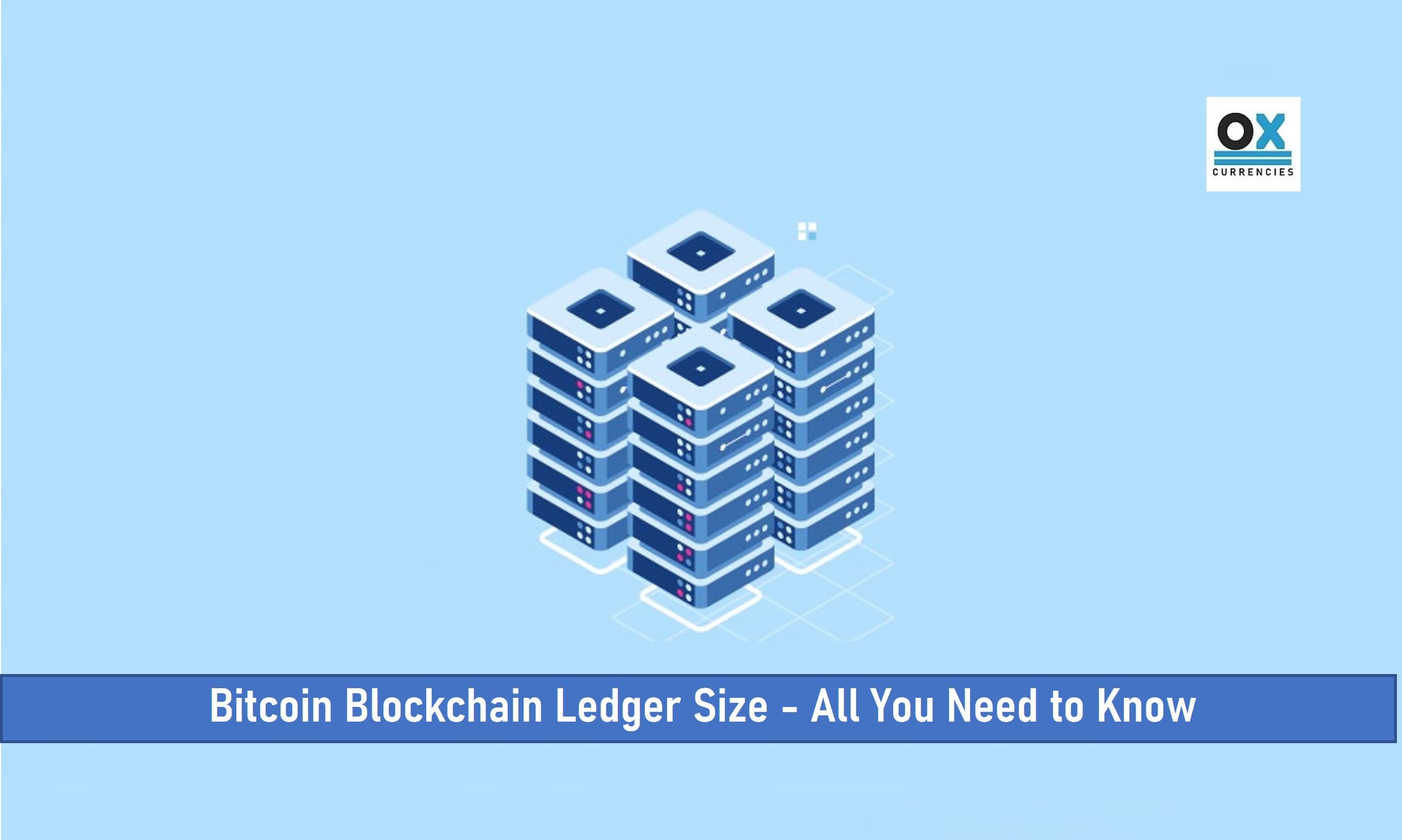
Bitcoin is stored on a blockchain, a list of records (known as blocks) linked to one another using cryptography.
Blockchain, therefore, serves as its platform where all money transactions are facilitated and recorded. The Bitcoin blockchain is not only secure but also available to everyone.
The Bitcoin blockchain ledger size has been a major topic in the blockchain community for several years due to its effect on scalability and network speed.
In this article, I will provide you with insights into everything you need to know about the Bitcoin blockchain ledger size.
Key Takeaways
• In 2010, the first Bitcoin transaction occurred when two pizzas were bought for 10.000 BTC
• An individual or group using the pseudonym Satoshi Nakamoto started what is known today as Blockchain.
• A blockchain uses a public ledger distributed to different participants, with each of them having a copy of the ledger stored in their respective nodes as a measure of security instead of using a central data server to store information,
• Each transaction in a blockchain is stored in groups of records called blocks. A block of information is filled with transaction records. Once a block is complete, it is linked to the previous one, forming a chain. Hence the term Blockchain.
• Bitmain is considered the largest blockchain organization in the world by market valuation. It is a Chinese company that produces and deals in integrated circuit chips for crypto mining.
• Ten countries are leading the way when it comes to blockchain implementation. They include; Australia, China, Malta, Dubai, Switzerland, Japan, Estonia, the UK, Singapore, and the US.
• The blockchain is stored on computers in a network called nodes.
SEE ALSO: Solana Blockchain Size (All You Need to Know)
SEE ALSO: Can My Blockchain Wallet Be Blocked?
SEE ALSO: Are Blockchain Wallets Non-Custodial?
How Large is the Bitcoin Blockchain Ledger?
The Bitcoin blockchain has grown and expanded beyond what it used to be a decade ago. And this blockchain size keeps increasing annually. For instance, the Bitcoin blockchain size was 614MB, but over time, it has grown from 150 – 250GB, with an annual growth of 50GB.
At the time of writing, the size of the Bitcoin blockchain ledger was 425.26 GB and was even said to be as large as 360.02 GB on October 10, 2021. And if it continues at this pace, it is estimated that by 2030, it will be more than 1TB.
Although there is a limit to the block size of the Bitcoin blockchain, the limit has a portion of unusable space within it, but you can work with it like that.
Does the size of a Bitcoin blockchain ledger matter?
Today, the world we live in thrives on transactions, and each day, billions of non-cash payments are in circulation.
The growth of these transactions is in an unusual style, but with the use of cryptocurrencies like Bitcoin, many of these transactions are facilitated easily on a mass scale.
Yes, the size of a blockchain ledger matters, and it’s very important. Although the Bitcoin blockchain ledger did not start to become so large, it has increased over time, affecting its scalability because the bigger it becomes, the slower the transactions will be.
This has been one of Bitcoin’s main problems. To temporarily find a solution to this problem, they implemented the SegWit2x hard fork to increase block size (at the granular level) and improve Bitcoin’s scalability and performance.
The more the Bitcoin blockchain size is projected to grow, the more the expense of purchasing larger disk space to participate in the network.
The biggest threat would now emerge when the rate at which the blockchain grows outpaces the rate at which storage becomes cheaper, making it very difficult and expensive for Bitcoin enthusiasts to contribute their skills or ideas to the network development.
Contributors will now be required to pay several thousand dollars to get their nodes up and running, which may prove worthwhile or abortive in the long run.
Is There Any Blockchain Size Limit?
The Bitcoin blockchain ledger is estimated to grow at 50 gigabytes per year and, by 2030, is expected to surpass 1 TB.
Not every node (Nodes are computers that run the Bitcoin software and send and receive transactions with other nodes in the network and also verify transaction validity) needs to download the whole blockchain to become functional.
Some participants in the blockchain take part in the network just to make transactions and not to validate one.
Whereas there are those nodes referred to as full nodes, which are required for those willing to participate in validating transactions. That is, they will have to download the whole 250 GB of blockchain data containing the block headers and transactions.
The current size limit of the Bitcoin blockchain ledger is 1MB, but within the limit is some space that is not usable, so you will have to work with the size limit the way it is.
Frequently Asked Questions (FAQs)
Q1. Can blockchain data be deleted?
No, blockchain data can’t be deleted or removed from a blockchain because blockchains are known for being immutable, i.e., once data has been verified and added to a block, you cannot delete or alter it.
Q2. Can the government take your Bitcoin?
No, they cannot. No governing authority, whether on the local or international level, can seize your Bitcoin because the Bitcoin technology has many security features to keep unauthorized users from accessing your Bitcoin wallet.
Q3. Can Bitcoins be stolen?
Although it’s nearly impossible, hackers can easily steal your assets if they access your private keys that are stored in applications and device wallets.
Final Thoughts
Although there are worries about the Bitcoin blockchain growing exponentially, it’s not a major pressing issue that needs too much attention.
The main focus, for now, should be on improving the scalability and transaction speed of the blockchain to aid faster transactions and encourage more crypto enthusiasts to key into the Bitcoin blockchain and contribute to the overall growth and development of the network.
Read More




